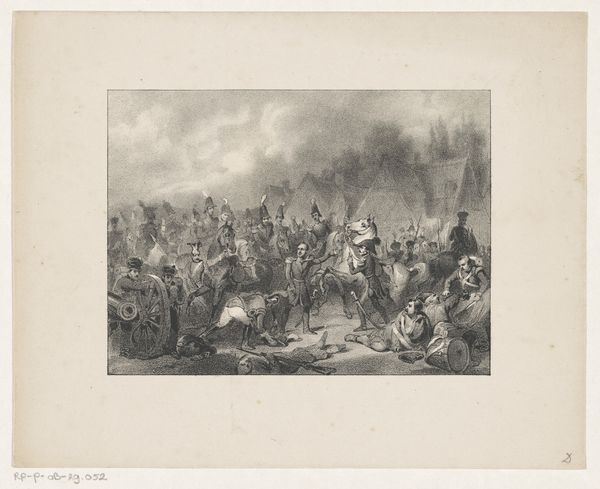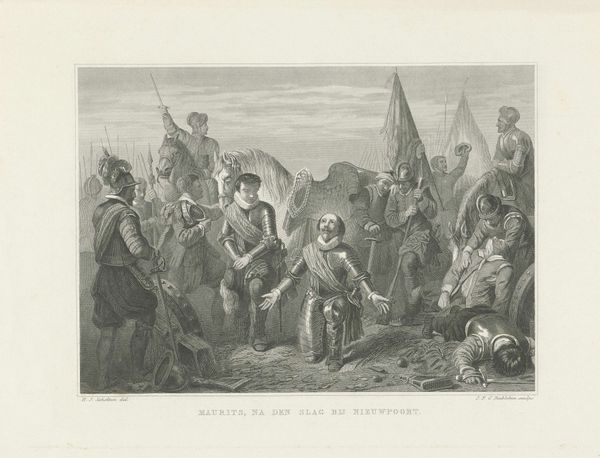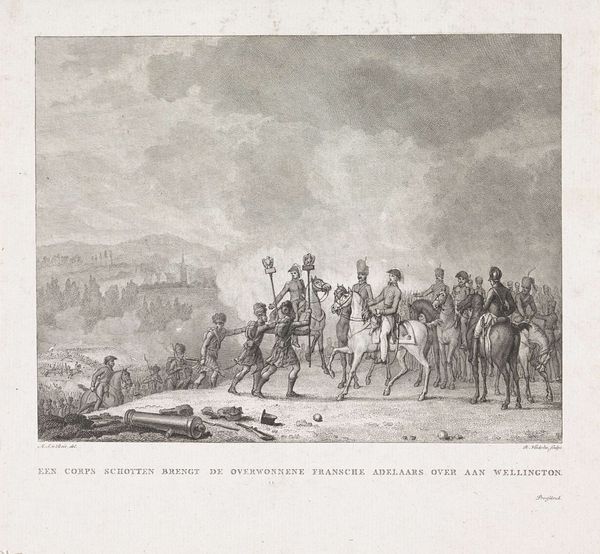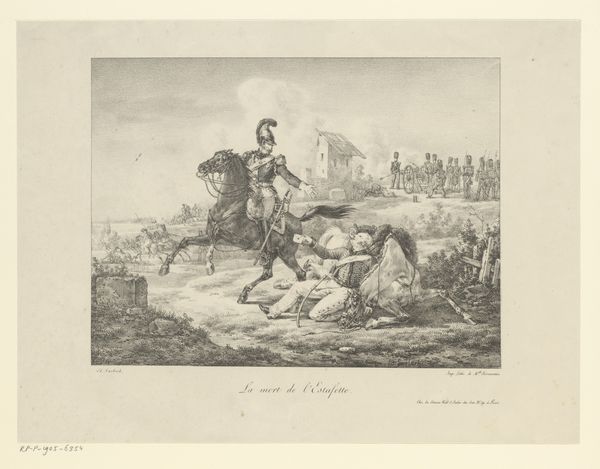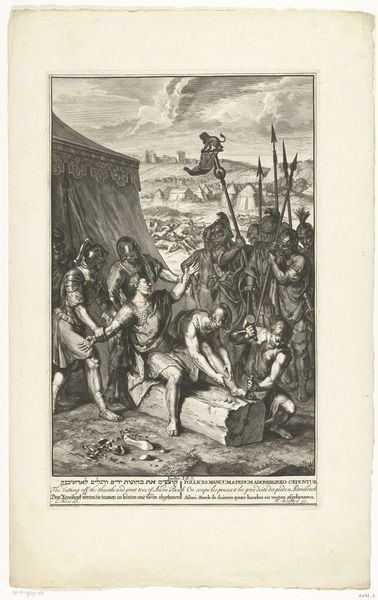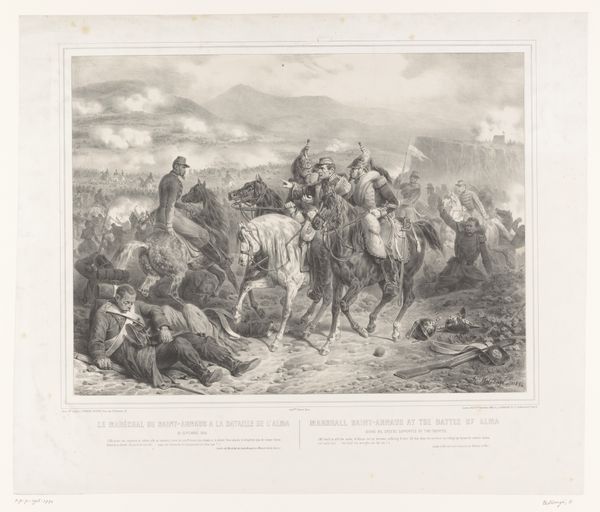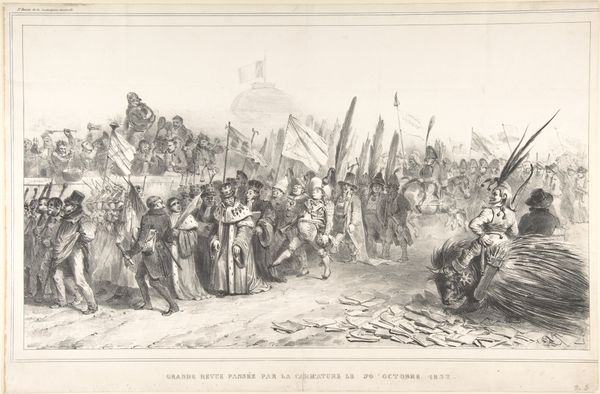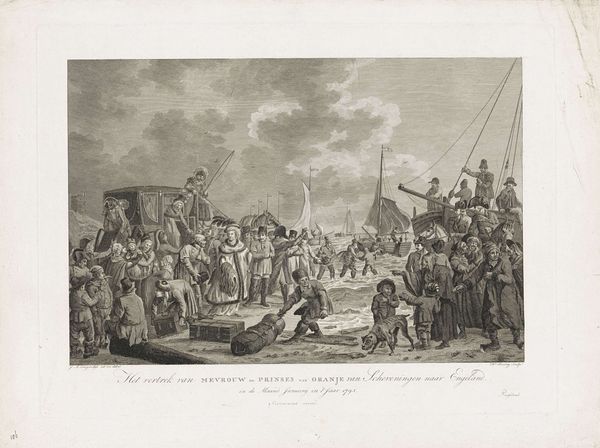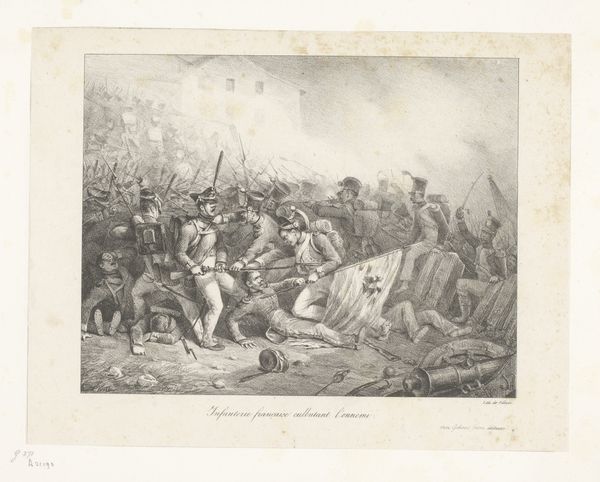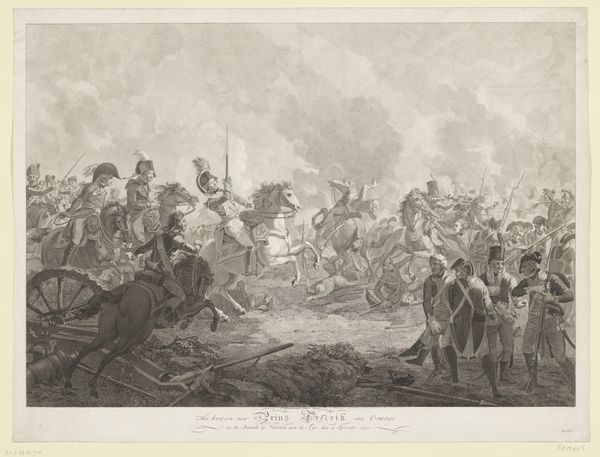
print, engraving
# print
#
landscape
#
romanticism
#
history-painting
#
engraving
Dimensions: height 418 mm, width 496 mm
Copyright: Rijks Museum: Open Domain
Curator: It feels terribly romantic, this swirling scene. It's full of desperate energy and violence, yet… theatrical, almost. Editor: That would be Nicolas Toussaint Charlet’s "Troepen van Napoleon vallen Akko binnen" or, in English, "Troops of Napoleon entering Acre." Charlet created it around 1821. As a print, specifically an engraving, it reflects a desire to disseminate a particular image of Napoleonic power. Curator: Disseminate it certainly does. Note how he places the figures, high above, illuminated. They almost float as symbols above the chaotic battle. Who are these people anyway? And does the tower burn, or explode? Editor: It is intended as a record of Napoleon's campaign in Acre. The elevated figures are likely key officers. The image presents Napoleon’s forces pushing into Acre in 1799, although it shows the historical campaign more favorably than reality played out; it was ultimately unsuccessful. You can also interpret the image in relation to broader romantic sensibilities after Napoleon’s ultimate defeat at Waterloo in 1815, six years before the image. The desire to resurrect Napoleon’s story through sentimental memory was strong, it would appear. Curator: Sentimental indeed! Look at the bodies on the ground – contorted into aesthetically pleasing poses, almost decorative! Charlet seems interested less in the historical detail than in the symbolic weight of Napoleon, transforming his battles into legends. The plume is mightier than the sword. Editor: Precisely. Engravings like these played a crucial role in constructing the "Napoleonic Legend," fueling public imagination and solidifying Napoleon's place in popular culture long after his reign ended. Charlet uses visual imagery as a potent form of political mythmaking, re-engraving reality through artistic interpretation. This would surely feed popular Napoleonic imagery across the continent for decades. Curator: I find it so intriguing how one image can tell a story about so many others—about public image-making, cultural memory, and of course, the endurance of symbols themselves. A powerful example here at the Rijksmuseum of history re-imagined and repackaged. Editor: Yes. Examining the image, as you say, reminds us how artists, prints, and museums actively shaped our perception of figures like Napoleon, imbuing historical moments with meanings far exceeding their immediate context. The afterlives of images matter immensely.
Comments
No comments
Be the first to comment and join the conversation on the ultimate creative platform.
